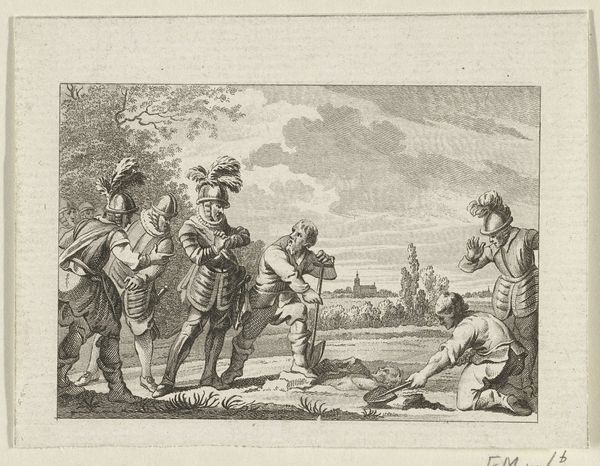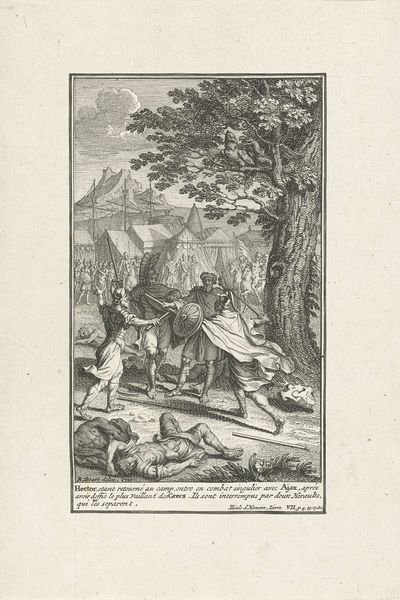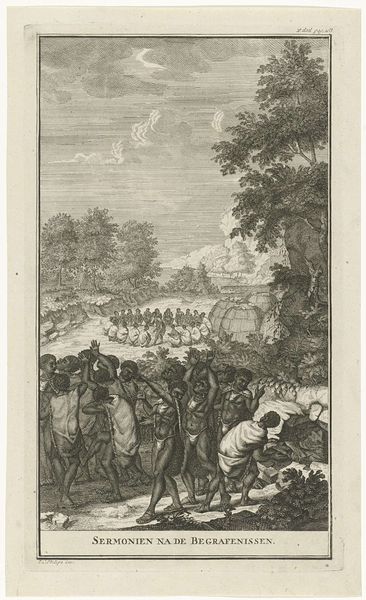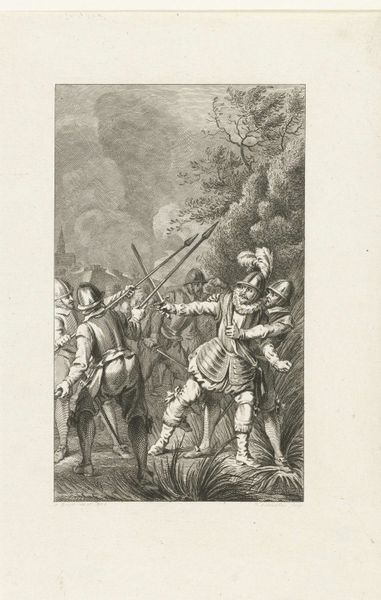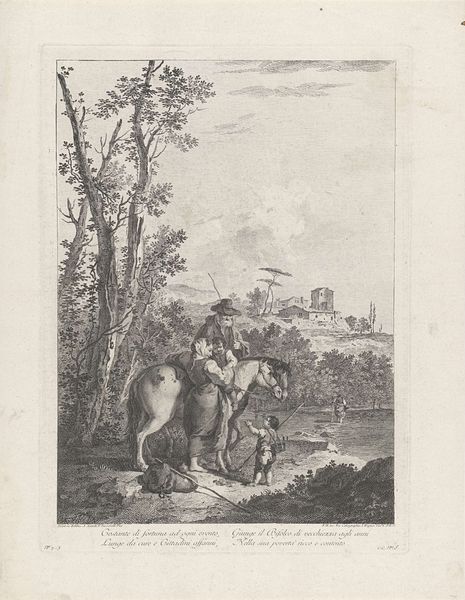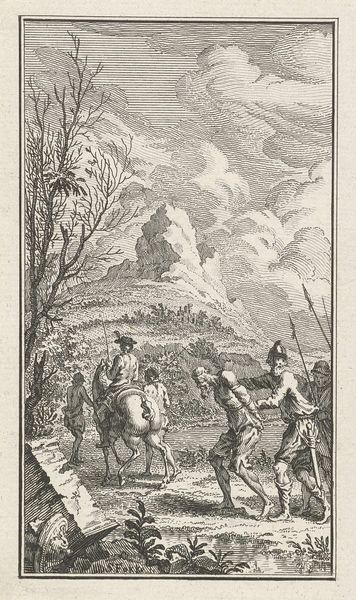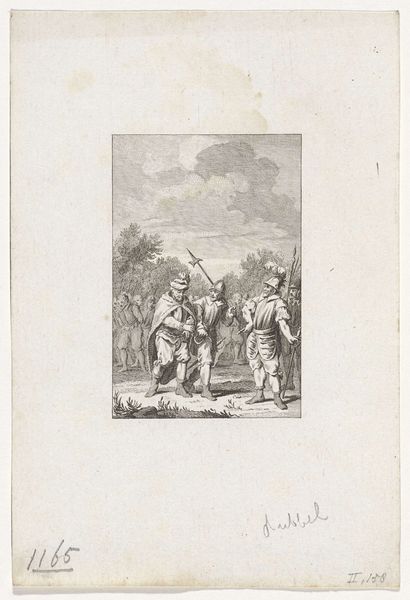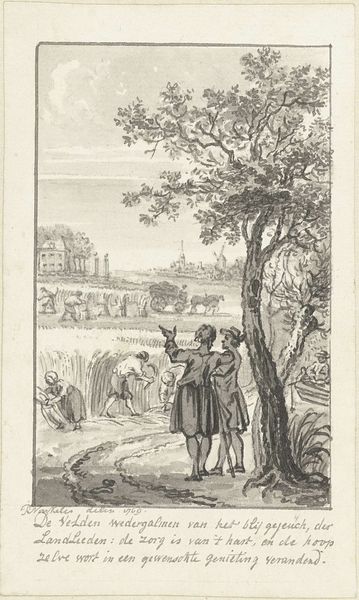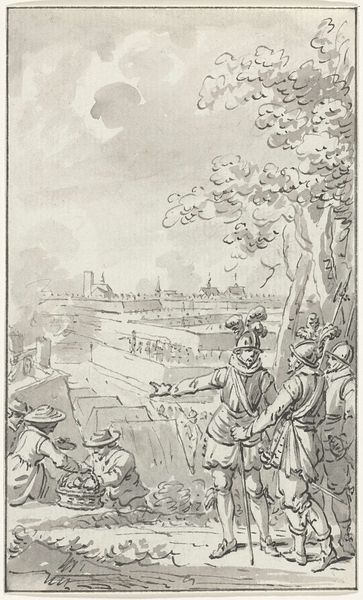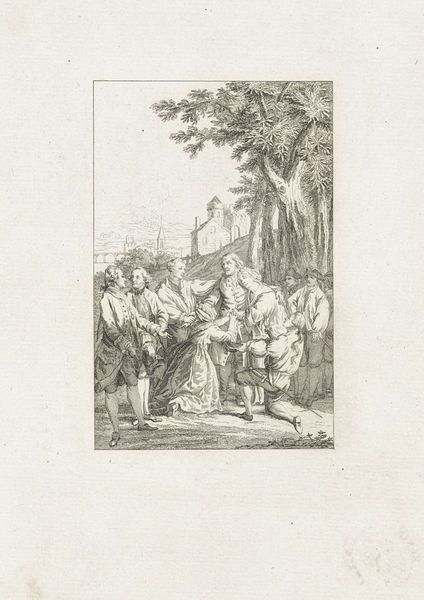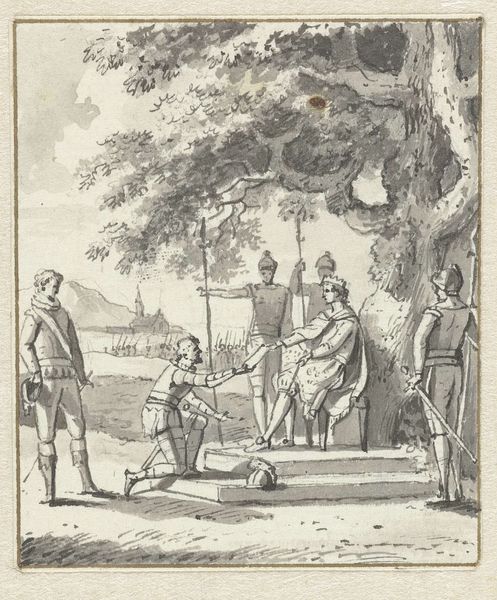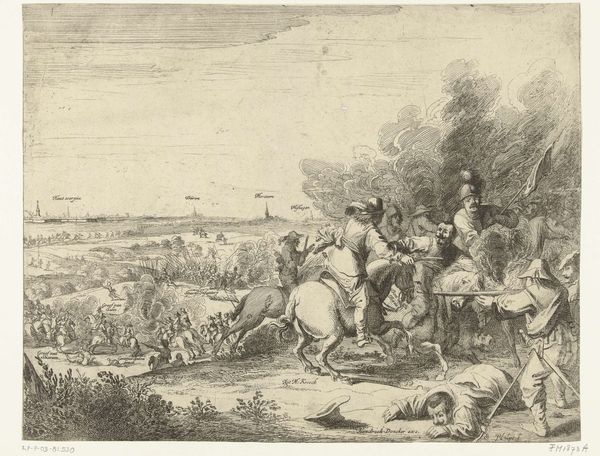
Dimensions: height 190 mm, width 119 mm
Copyright: Rijks Museum: Open Domain
Curator: Let's turn our attention to Reinier Vinkeles' 1787 engraving, "Maurits bij het beleg van Geertruidenberg, 1593," held here at the Rijksmuseum. What are your initial impressions? Editor: Stark. It's almost clinical in its rendering. The greyscale lends it a detached, reportorial quality, even with the implied chaos of a siege. I’m struck by how neatly the composition contains the drama. Curator: That clinical detachment perhaps speaks to the engraver’s role within a burgeoning print culture of the Dutch Golden Age. It’s an image depicting Prince Maurits overseeing the siege of Geertruidenberg during the Eighty Years’ War, a pivotal moment in Dutch history where national identity and the desire to resist Habsburg dominance was solidified. The engraving wasn’t made until long after the actual event. Editor: Yes, I notice how Vinkeles directs our eye. From Prince Maurits’s commanding gesture, pointing toward the besieged city, across the zig-zagging fortifications, and into the distant, smoke-filled cityscape itself. There’s a careful orchestration of line and form creating a sense of depth. How do you interpret Maurits’ presence within this national narrative? Curator: Maurits represents the strategic and military prowess of the Dutch Republic. The meticulous detail given to his attire and the weaponry speaks to a period grappling with advancements in military technology and its relationship to power and self-determination. His direct gaze asserts a kind of Dutch exceptionalism, looking forward, defying an empire and laying claim to their own space. The engraving would serve to propagate and strengthen such exceptionalism through collective memory. It shows that historical narratives were already being carefully managed and widely distributed. Editor: Absolutely. Considering the formal aspects alongside the context, I find myself intrigued by the spatial organization and how the artist’s choice of composition contributes to the articulation of Dutch authority and autonomy. Curator: And it’s important to remember this engraving was widely distributed, contributing to a visual culture where events were framed and understood in specific ways – shaping public sentiment and national identity through printed images like this. Editor: The more you delve into the sociopolitical conditions, the more charged it becomes, enriching our appreciation of the careful craft that went into making it. Curator: Indeed, a potent blend of technique and the politics of remembrance.
Comments
No comments
Be the first to comment and join the conversation on the ultimate creative platform.
